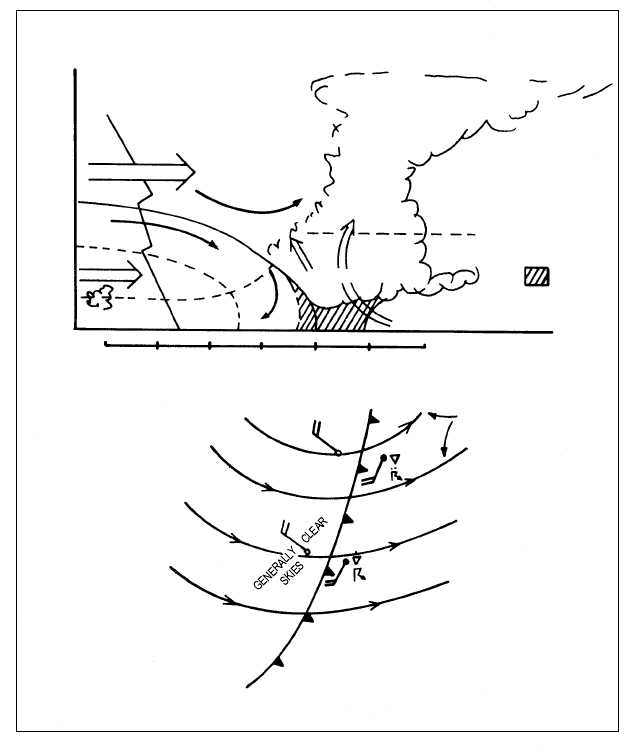directions are a good indication of the passage of a
fast-moving cold front. The wind veers with frontal
passage and is strong, gusty, and turbulent for a
considerable period of time after passage. The dew
point decreases sharply after frontal passage.
Weather
Cumulonimbus clouds are observed along and just
ahead of the surface front. Stratus, nimbostratus, and
altostratus may extend ahead of the front in advance of
the cumulonimbus and may extend as much as 150
4-34
200
150
100
50
0
50
100
PRECIP.
AREA
CUMULONIMBUS
ALTOCUMULUS
0 C
O
CIRROSTRATUS
COLD
AIR
SUBSIDENCE
INVERSION
FRONTAL
INVERSION
CUMULUS
WIND
Ns
15,000
10,000
5,000
ALTITUDE FT
CIRRUS
AG5f0432
STRATOCUMULUS
20,000
25,000
WIND
0O
UPPER
WIND-
FLOW
OR
OR
Figure 4-32.—Typical vertical structure of a fast-moving cold front with upper windflow across the front.

